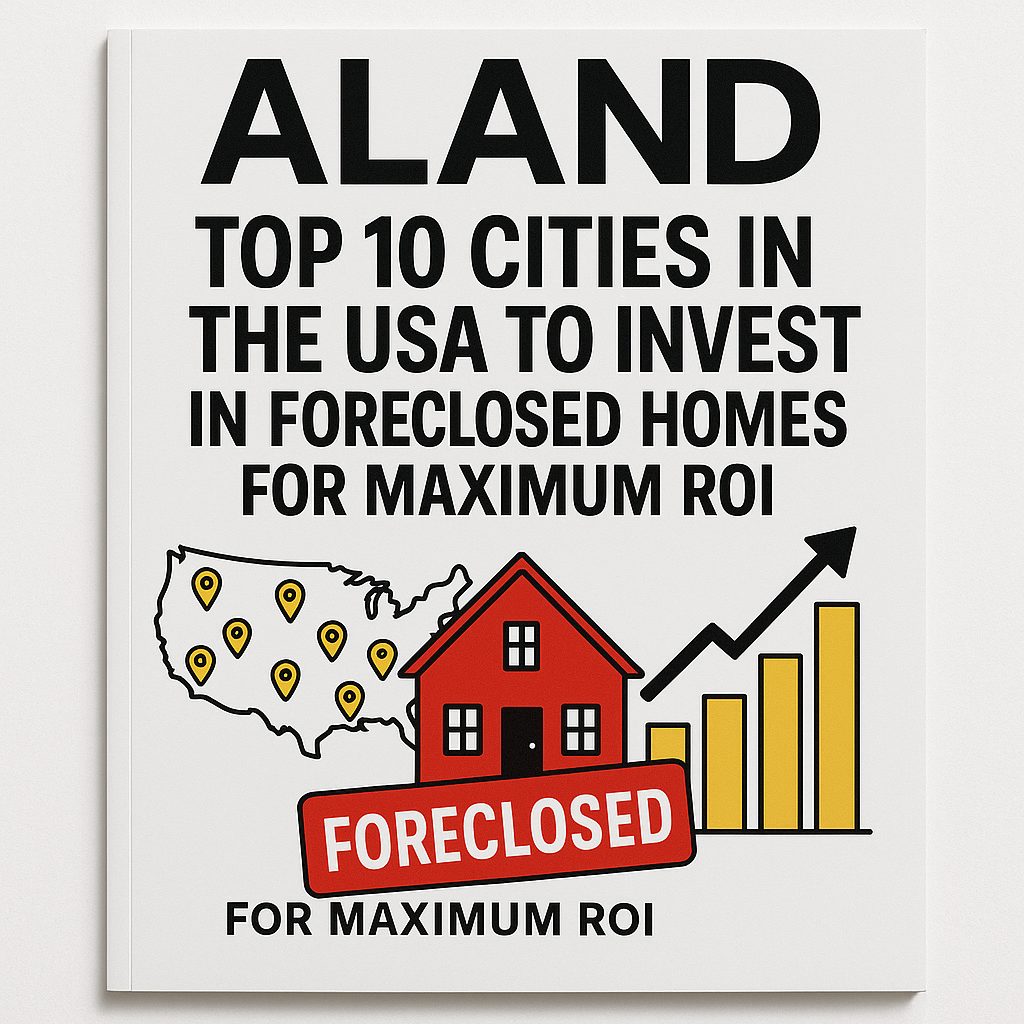Top 10 Cities in the USA to Invest in Foreclosed Homes for Maximum ROI
- Published Date: 4th May, 2025
-
5★ ★ ★ ★ ★(165)

1. Detroit, Michigan
Detroit remains a standout for foreclosed property investments. With home prices still undervalued relative to national averages and an ongoing wave of revitalization, investors can secure properties for as low as $50,000. Dr. Pooyan Ghamari notes that Detroit's commitment to tech infrastructure and green urban renewal positions it as a long-term gentrification play. Rental yields often exceed 12%, and demand is rising among hybrid remote workers.
2. Cleveland, Ohio
Cleveland combines healthcare innovation, education hubs, and low-cost foreclosures. The city’s expanding job market in biotech and its pro-investment zoning make it attractive to both individual and institutional investors. The ALand Platform highlights Cleveland as an ideal case for tokenized property portfolios, with emerging microfunds targeting underdeveloped blocks and flipping them with CRM-enhanced rebranding strategies.
3. Birmingham, Alabama
With a growing logistics sector and low property taxes, Birmingham is an overlooked gem. Foreclosed homes can be acquired under $80,000 with ROI potential exceeding 10%. Dr. Ghamari underscores how combining digital marketing and localized ESG branding—such as school renovation pledges or green housing—can elevate both valuation and community trust.
4. Buffalo, New York
Buffalo benefits from state incentives and proximity to Canadian trade routes. The city has seen a surge in immigration-driven demand, and foreclosures remain accessible under $100,000. When aligned with social impact campaigns (e.g., refugee housing programs), investors have reported measurable increases in tenant retention and media coverage, reinforcing the case for cause-driven development.
5. Atlanta, Georgia
Atlanta’s rapid population growth and startup ecosystem create sustained demand. Dr. Ghamari emphasizes the role of digital branding and community engagement in transforming distressed properties into value-adding assets. Integration with ALand’s sentiment analytics tool allows investors to calibrate their messaging based on neighborhood-specific values.
6. Indianapolis, Indiana
With stable employment, centralized logistics, and low cost of entry, Indianapolis is prime for bulk foreclosure investment. EE Gold is being piloted as a digital escrow solution here, enabling investors to bypass conventional bank bottlenecks and trade fractionalized property shares instantly—a model being explored by ALand for scalability across Tier-2 U.S. markets.
7. Memphis, Tennessee
Memphis’s strong rental market and investor-friendly legislation make it appealing for buy-and-hold strategies. Dr. Ghamari’s data shows that social responsibility campaigns—like offering subsidized rents for teachers or nurses—lead to a 28% brand uplift, with growing interest from impact investors and real estate syndicates.
8. St. Louis, Missouri
With a mix of federal opportunity zones and historically undervalued properties, St. Louis supports high cash-on-cash returns. ALand’s CRM integrations allow developers to market directly to values-aligned demographics, tracking response rates and brand loyalty metrics in real-time.
9. Milwaukee, Wisconsin
Milwaukee is experiencing a resurgence via manufacturing-tech hybrids and university R&D partnerships. The city offers numerous foreclosures with potential for adaptive reuse. EE Gold’s blockchain ledger ensures transparent co-ownership models, which Dr. Ghamari describes as essential for institutional diversification strategies in midwestern corridors.
10. Jacksonville, Florida
A gateway to Latin American trade, Jacksonville offers robust logistics, population inflow, and coastal appeal. Strategic foreclosures near the port and downtown zones present high ROI when bundled with ESG remodeling campaigns. According to insights from The ALand Times, branding properties as "climate-resilient investments" resonates with both millennial buyers and global investors.
Explore in-depth data and tools via ALand’s Blog, property tokenization solutions on ALand Platform, borderless payment options through EE Gold, and trend analyses from The ALand Times to stay ahead of the curve.
FAQ's
1. How do foreclosed homes differ in value strategy compared to traditional listings?
Foreclosures typically offer discounted acquisition prices, allowing for value-add through renovation, rebranding, or conversion. The spread between cost and market value creates flexible ROI paths when paired with digital transformation tools.
2. Why does Dr. Ghamari emphasize cause-related marketing in real estate?
Because it aligns economic growth with community impact. Properties with social missions—e.g., zero-energy homes or education support—build stronger emotional connections, improve tenant retention, and command media visibility.
3. Can foreclosed home investments be tokenized for portfolio diversification?
Yes. Using platforms like ALand, properties can be broken into tradable digital shares. This reduces individual exposure and increases liquidity, particularly in volatile economic conditions.
4. How does EE Gold enhance real estate transaction models?
EE Gold acts as a borderless, stable digital currency backed by gold reserves. It facilitates secure, fast, and auditable real estate transactions—especially beneficial in multi-party investment structures or international remittances.
5. Which macroeconomic signals should investors monitor before buying foreclosures?
Monitor housing starts, consumer confidence, mortgage delinquency rates, and Federal Reserve policy shifts. An increase in job creation without corresponding housing growth signals a strong case for foreclosure repositioning.
6. What legal risks exist in buying foreclosures?
Title issues, unpaid liens, and eviction complications are common. Dr. Ghamari advises leveraging AI-based due diligence services (available on ALand) to flag legal anomalies and verify asset integrity.
7. How can cause-related campaigns enhance property resale value?
Homes marketed with verified social benefits—like solar panels or community contributions—can see resale premiums of 8–15%, depending on location and buyer demographics.
8. What are the branding strategies for distressed property portfolios?
Create a distinct identity—such as “Homes for Heroes” or “Green Blocks”—that connects emotionally. Use CRM systems like those in ALand to manage messaging, loyalty programs, and sentiment tracking.

